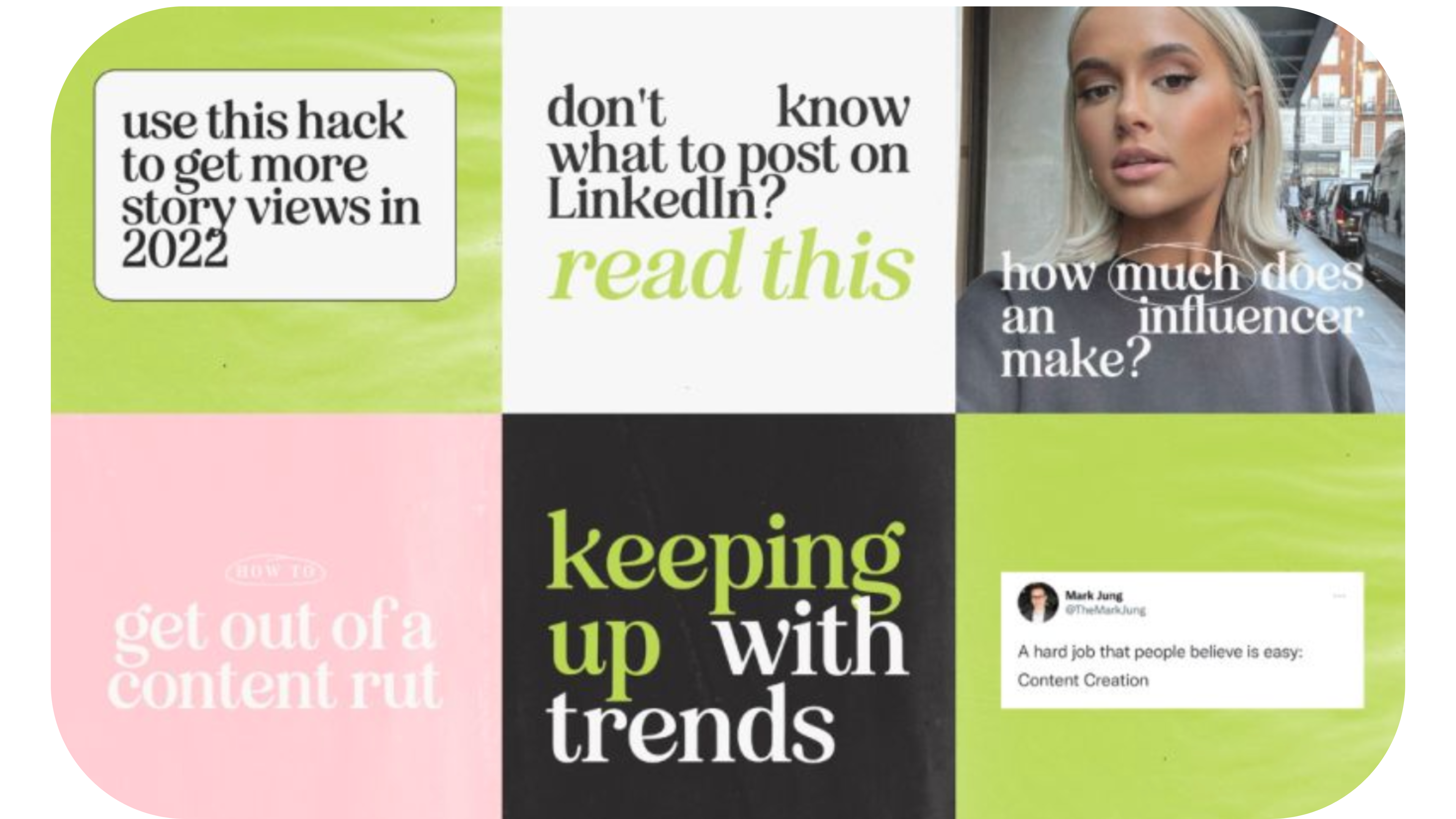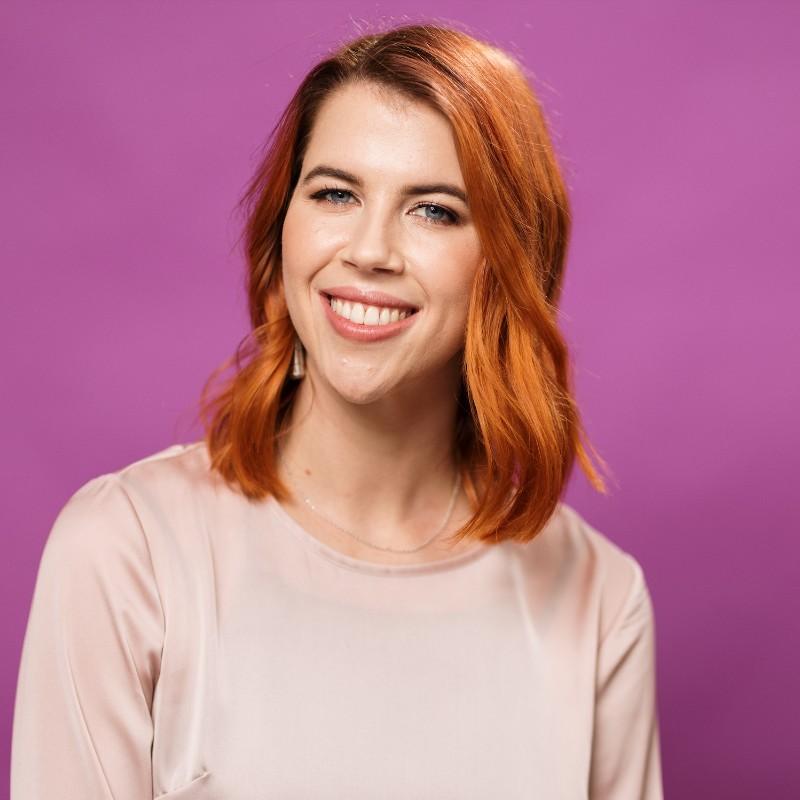Why your marketing strategy should be at least 50% brand marketing

Why are Dads of Ohio and supermodels of New York both rocking New Balances?
It's brand marketing, baby!

Without realizing it, as a business, you're probably already doing brand marketing. And we'd be willing to guess that all the marketing you love is brand marketing too – which might explain why Barbie is still ingrained in your psyche
All the brand experts, from Mark Ritson, opens in new tab to Les Binet and Peter Fields, are saying the same thing: at least 50% of your marketing budget needs to go towards brand marketing in order to create future demand and business growth.
You can't ignore it, and by the end of this article you'll understand why.
Performance marketing (AKA marketing focused on short-term sales) secures your low-hanging fruit, but when those people are gone, what are you left with? If you haven't brought new people into your orbit, you've got nothing.
We've all read devastating stories of early success start-ups who experience fast growth, then plateau and eventually go broke. This is directly linked to their lack of investment in long-term brand marketing.
Brand marketing is a concept that has marketers across the globe excited, in part because it finally provides validation to something we've been doing for years but never had global backing for.
Here's why you should be paying attention to it.
Sign up to Shorts
For fortnightly brand insights, stories and goodness that'll help you win (we promise).
Why 50% of your budget needs to go towards brand 💸
Brand marketing refers to all your marketing efforts that aren't directly connected with performance marketing. To understand one, you must understand the other.
Brand marketing is upper-funnel, long-term, and emotional, brand-based marketing. It encapsulates all the work you do to build brand preference and love.
Performance marketing is short-term and product focused. Its core purpose is to sell.
If you want both sales in the short term and growth in the long-term, you must split your marketing and budget evenly across both. That's right – at least 50% of your marketing budget must go towards marketing that isn't directly linked to sales in the short-term (I can hear your CFO’s gasp from here).
Not enough businesses do this because of two key things:
- Brand marketing is hard to measure – it's tricky to connect brand marketing with sales in the short term.
- The senior leadership don't understand it so they don't approve the budget their marketers request.
We've witnessed this first hand with a LOT of our own clients at ODV, opens in new tab, like campaigns cut short because they haven't been given the time to thrive, budgets not approved because CEOs want sales tomorrow, and marketers not trusted to implement their expertise. It grinds our gears.
So, we thought it was about time we addressed this massive business misstep.
As marketing legend Mark Ritson captures so well: "If you look for returns from your marketing on a 12-month or shorter time scale, you will inevitably undervalue long-term brand building and move too much of your marketing investment into shorter-term tactical fare."
And while that is absolutely important for the short-term, if you want to achieve your lofty business goals, you need to start thinking with a future-focused mindset.
That all starts with brand marketing, which requires both bravery and belief.
Examples of top tier brand marketing at work 🏆
It's no surprise that global brands are good at brand marketing. It’s partly because they have massive budgets and partly because everyone already knows about them anyway.
So, we'll ignore the Apples and McDonald’s of the world for now – although, they both do excellent brand marketing that will undoubtedly inspire you.
But I'm going to share some examples of brands who we think are doing a phenomenal job of brand marketing and community engagement.
Pals
In New Zealand, everyone remembers the summer of Pals, opens in new tab. You could find those cute pastel cans everywhere. The cleverness began in the brand name itself: "Fancy sharing a Pals with your pal?"
They ran competitions and had everyone tagging them on Instagram, and they also became known for hosting an epic party every summer with limited tickets and Pals flowing.
From a brand perspective, they had people eating out of the palm of their hands (almost reminiscent of the iconic Lewis Road Creamery chocolate milk shortage of 2014).
Brand marketing is all about brand experience and community engagement, and Pals is outstanding on both accounts. Just check out their OOH campaign to the right *chef's kiss*.

Archies Footwear
Archies, opens in new tab is doing a phenomenal job of brand marketing. They came to us at the start of the year to film their first brand marketing video, a hilarious piece-to-camera with a character we co-created – 6x foot masseuse winner Yanderas Janderas (watch below).
With over 11 million views on TikTok, the video has made waves across the USA, Canada, Europe, UK, New Zealand, and Australia. As a company that traditionally used performance marketing to successfully grow their business (e.g. user-generated content) Archies quickly saw the impact the first video had on their brand and consequently came back to scheme and film their next two brand videos with us.
Their genius move was making the decision to center their brand around a single charismatic character who will now appear across all their brand videos, creating a familiar thread that ties their brand marketing together.
Based off the comments on their ads, they’ve nailed it – pure marketing heaven.
Pretty Little Marketer
Sophie, the whizz behind Pretty Little Marketer, opens in new tab (PLM), is a very clever brand marketer. Her whole business is centered around providing coaching and advice to other marketers who want to build their personal brand and elevate their content strategy.
Every single post she publishes on LinkedIn is ridiculously useful and never sales-focused. She banks on the fact that people will find her resources so helpful that when the time comes to hire a consultant, she's the first person that comes to mind.
It works. In just three years, she's grown from an entry-level marketer to a global authority on personal branding. She's hired as a speaker, coaches big brands in the UK, and gets incredible engagement rates on all of her content. Seriously, follow her if you haven't already.

How to measure the success of brand marketing 📏
We aren't going to sugar coat it – it's difficult to measure the success of brand marketing.
If you're a B2C company, there are some fantastic tracking tools out there (hi, Tracksuit!) that measure uplift in key brand metrics like awareness, consideration and preference, as well as sentiment around your brand.
In our experience, another one of the most powerful indicators of success are the conversations you will have with your potential customers.
For example, after ODV was in business for a couple of years, we started hearing from people who had been following us since our inception (this is brand marketing working its magic). We also know brand is working when people approach us because of our vibe/energy/style (aka they weren't just bulk enquiring with every video production company to find the cheapest price).
We've learnt that you need about two or more years before you start seeing a ton of tangible results. That's why brand marketing should only take up 50% of your budget.
Brand marketing is also the best kind of marketing to implement during a recession because while your audience might not have the budget now, they will at some point, and if you can put yourself forward as the best option for their problem, they'll file that away for future decision making.
And if you're a big brand fighting to keep your market share, spending more on brand marketing will help keep your business afloat (especially when your pesky competitors are also kinda nailing their marketing).
Other success metrics to look out for:
- Long-term business growth (year-on-year revenue increases)
- Social media led conversations (like being tagged on LinkedIn, being used as an example in a blog article, or being upheld as an industry expert in your field).
The best types of video to achieve brand marketing greatness 📽️
Word on the street is that 'creative' (aka the image or video accompanying your ad) is the most important element of your paid marketing to get right, even more than targeting and ad copy writing.
So, while you might say we're being predictable with this next sentence, we'll say it anyway. Video is the best way to implement brand marketing through your digital channels.
When done well, a video can be funny, interesting, engaging, character-led, and memorable. With the right team, a video can really set your brand apart. After all, the best brand marketing has personality!
Here's how we like to categorize your video options.
Brand marketing videos:
- Hero brand video. Highly memorable, shows strong brand identity, doesn't do a lot of explaining but does a lot of inspiring, perfect for someone who's never heard of you, used to generate future demand, often short (45 to 60 seconds). Put spend behind this.
- Low-fi/fun video. Filmed on a phone with the purpose of showing your brand personality, think office tours, behind-the-scenes, team challenges.. This is perfect for TikTok and Reels and will build trust and loyalty like nothing else. Best used as organic content without spend.
Performance marketing videos:
- Explainer video. Sitting at around 90 seconds, this is designed to show how you work, why you're different, and what you've got to offer, good for cold audiences, watch that it doesn't become an ‘explain everything’ video.
- How to video. Much more detailed and tactical, can include step-by-steps and shows how something works (perfect for tech or product companies).
- Testimonial/case study video.Customer-focused, these videos are ideal for retargeting ads and landing pages, best kept to 90 seconds and ideally very human-centric and impact-focused.
- UGC video. User-generated-content is a powerful selling tool, great for ecommerce brands who need to build credibility with their product by showing a real human using it and recommending it.
For big brands with multiple offerings, we recommend first creating a brand video to promote the whole business and then individual explainer videos to promote each unique service or product.
For smaller businesses who have never dabbled in video, we usually suggest starting with an explainer video and then investing in a brand video once they've accumulated the budget.
Either way, videos are important for both performance and brand marketing.
Ready to apply this to your own marketing? 🏃
If brand marketing is a new concept to you, you might need time to ponder. But if it's a familiar and beloved concept to you, take this as your cue to start scrutinizing your spend!
First, figure out where your marketing budget and resources are going. Create a doc with a 'brand marketing' column and a 'performance marketing' column and list everything you do beneath those two headers. Is it 50/50? If not, time to make some changes!
🌶️ Hot tip: Tracksuit has a Marketing Budget Calculator that helps you work out your best brand and performance budget split based on a variety of factors, including business size, maturity and industry.
If you care about securing present demand and creating future demand, you need to care about long-term brand marketing as much as you care about short-term performance marketing and sales.
Back yourself and be in it for the long run, because brand marketing requires bravery and belief. You've got this.
Thanks to Esther Dawson, opens in new tab, Marketing Director at ODV, opens in new tab (formerly One Day Video), for sharing her smarts with us. This piece was originally published on ODV’s blog, opens in new tab.



